Terrorism, piracy and theft are becoming increasingly serious problems for chemistry companies. Phil Taylor finds out how they're protecting themselves
Terrorism, piracy and theft are becoming increasingly serious problems for chemistry companies. Phil Taylor finds out how they’re protecting themselves
In the chemical industry, the word ’security’ has traditionally been synonymous with making sure hazardous materials are stored and transported safely in order to avoid accidents. Increasingly, however, the term has been used in reference to the attentions of criminal elements and guarding against actions such as terrorism, piracy, cargo theft and the emerging threat of economically motivated adulteration.

The 11 September terrorist attacks in New York, US, in 2001 were perhaps the primary catalyst for that change of focus. Four years later, the 7 July attacks in London, UK, emphasised the need to secure the supply chain for even mundane, everyday chemicals which could be used to manufacture a bomb. Whatever the cause, legislators in Europe and elsewhere in the world are responding with new guidance and regulations, while industry itself is coming up with initiatives to protect its customers and safeguard the brands and reputations it trades on.
Counter-terror
’Since the World Trade Center attacks in 2001, most of the efforts of the chemical industry have gone towards ensuring supply chains are secure from a counter-terrorism perspective,’ says Peter Newport, director of the UK’s Chemical Businesses Association (CBA). Previously, the emphasis was on ensuring material was not diverted for use in narcotics production.
Theft and diversion of chemicals for use in terrorism is a growing concern for governments around the world. In the US, the Department of Homeland Security (DHS) has advised manufacturers to be wary of groups setting up dummy companies using rented warehouses to rfeceive materials. Earlier this year, technical adviser to the DHS, Larry Stanton, told a chemical sector security meeting this approach had already been used to secure narcotics-related chemicals. ’It could easily be done to acquire weapons-capable chemicals,’ he advised.
Authorities are similarly concerned elsewhere. The terrorists involved in the 7 July bomb attacks in London in 2005 constructed devices using hydrogen peroxide, a chemical used in hair bleaching and therefore readily sourced from hairdressing suppliers. This has prompted the European Commission (EC) to look at expanding the existing counter-terror provisions in the legislation to include more readily available explosive precursors in addition to bulk materials such as ammonium nitrate fuel oil. Meanwhile, a separate initiative at the EC looking at the security of materials potentially of use in chemical, biological, radiological or nuclear weapons has now reached the committee stage. On the chemical side, the creation of a list of high-risk substances, warranting additional security measures, is under discussion.
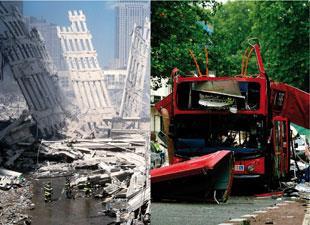
Away from the legislative arena, different sectors of the chemical industry are drawing up their own, self-regulatory systems to tackle the issue of supply chain security. For example, the CBA updated elements covering security in its code of practice earlier this year. In a nutshell, this code asks all member companies to undertake a risk assessment exercise, upon which security recommendations are made. This latest version also extends the risk assessment requirement to organisations such as traders and brokers, which do not actually handle chemical materials directly.
According to Newport, this sort of initiative can be very effective. Semi-official initiatives by the chemical sector in the UK and Germany, in which manufacturers, distributors and carriers of chemicals bring suspicious looking transactions to the attention of the authorities, have chalked up some successes. In 2007, for example, a suspicious transaction involving hydrogen peroxide played a key role in the arrest of three Islamic militants suspected of plotting bombing attacks in Germany. ’It’s far easier for industry to identify those transactions than government, because we are in the front line,’ says Newport, who suggests that drawing up high-risk chemical lists, as per the current EC deliberations, may be too blunt an instrument. ’It could take 18 months or more to amend the risk-based lists laid out in primary legislation if a new threat emerges,’ says Newport. ’Industry can change its advice to members within days, as was demonstrably done following 7/7.’
There is also concern among the chemical sector that some of the legislative proposals could be disproportionate to the security risks involved, particularly in light of the draft advisory issued earlier this month by the European Parliament’s Home Affairs Committee (HAC), which indicated that the EC should go a lot further in tightening up controls on these materials and criticises the commission for being too influenced by industry.
For example, among the amendments proposed by the HAC is that industrial chemicals on the proposed list - which could conceivably be used to manufacture improvised explosives - should be replaced, irrespective of the economic cost, and this has been greeted with consternation by the CBA. ’There are widely used chemicals on the list such as acetone, sulfuric acid and nitric acid which have been used for years without a major security issue, and replacing them would be a major headache,’ says Newport.
Piracy and theft
In contrast, piracy in Southeast Asia and off the Horn of Africa remains an everyday problem for the chemical industry - and a far cry from the popular image of swashbuckling buccaneers sailing the high seas. The grim reality is that modern-day pirates are likely to be armed with automatic weapons and rocket propelled grenades, and be prepared to use them with lethal consequences. In November last year, for instance, news media reported that the captain of chemical tanker MV Theresa VIII died from gunshot wounds after his ship was hijacked in the Indian Ocean.
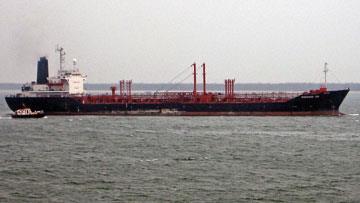
Figures released earlier this year by the German Institute for Economic Research (DIW) indicated that the number of incidents doubled between 2008 and 2009, including a number of cases involving chemical and oil tankers. And in July, Somali pirates hijacked a chemical tanker operating in the Red Sea, the first incident in the area and an indicator perhaps that pirate gangs are operating further away from home. DIW suggests that in some piracy hot spots, local authorities have a vested interest in seeing the activity continue because of the positive impact on the economy in regions where poverty is rampant.
Slow-moving chemical tankers seem to be a perennial target, despite the fact that their cargo is almost impossible to sell on. In many cases, the objective is petty theft but - because they tend to be operated by big companies - increasingly the emphasis is on kidnapping for ransoms. Ralf Nagel, general manager of the German shipping company Verband Deutscher Reeder, believes the answer is to have armed marines on board ships in high-risk areas. ’International experts, including those from the German Navy and Federal Police say this provides the most effective protection against pirate attacks,’ he says. ’We want the German Defence and Interior Ministry to develop ways to achieve this,’ he adds.
Meanwhile, back on land, cargo theft has been on the rise, according to figures from logistics security specialist Freightwatch, with even a well-policed country like the US seeing a 12 per cent hike in 2009 compared with the previous year. The average value of stolen cargo is also rising, the company says, suggesting that thieves are selectively targeting high-value shipments, such as pharmaceuticals.
The problem raises questions of who should take responsibility for what. Earlier this year, Pemex filed a lawsuit against chemical giant BASF, claiming it illegally profited from oil products stolen from the Mexican oil giant by criminal gangs and smuggled across the border with the US. Pemex requested damages from BASF even though it acknowledged that BASF bought the stolen material - some $2.4 million (?1.5 million) of condensate - unknowingly from the other defendants named in the lawsuit. In other words, it contended BASF was not rigorous enough in its oversight of the chain of custody, even though the stolen condensate passed through several companies before reaching BASF.
The Mexican government said recently that drug cartels are diversifying their operations away from narcotics and into other criminal activities, including piracy and the theft of oil and minerals. Pemex itself says it has lost material worth $300 million over the last four years. In June, five Pemex workers, and two employees of a contractor, were kidnapped and are still missing. ’Our intelligence indicates there have been steady and/or increasing rates of cargo theft throughout the first three quarters of 2010 in Mexico,’ said Freightwatch in a recent market report.
Economically motivated adulteration
The consequences of failing to keep the raw material supply chain secure are perhaps most serious in the pharmaceutical industry, with the human cost evident in cases of another emerging supply chain threat: economically motivated adulteration. The term was adopted recently by the US Food and Drug Administration (FDA) to describe the fraudulent, intentional substitution or addition of a substance in a product to boost its value or reduce the cost of production.
There are numerous well-recorded examples. In 2008, deliberate adulteration of the active pharmaceutical ingredient heparin with another chemical designed to fool identity testing led to an estimated 200 or more deaths worldwide and forced US drugmaker Baxter to recall thousands of product units. That incident came against a backdrop of several cases in recent years in which counterfeiters have laced the excipients glycerol and propylene glycol with cheaper diethylene glycol - often in syrup-based drugs intended for use in children - causing hundreds of deaths in countries such as Haiti, Panama and Nigeria.
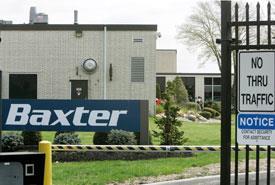
At the CPhI exhibition held in Paris, France, in October 2010, European Fine Chemicals Group board member Guy Villax said that most public, enforcement and legislative attention in Europe is on counterfeit finished pharmaceuticals - but this is missing the main threat. ’Below the waterline lie falsified active pharmaceutical ingredients (APIs) that enter the legal supply chain,’ said Villax. ’Their toxicity is undetected until it hurts the patient, and if that toxicity is long term it is unlikely ever to be detected.’ Just one batch of falsified API can reach tens of thousands of patients, and while the number of documented deaths lies in the hundreds, this is likely only a fraction of the true total, said Villax.
Why has the quality of APIs and other ingredients become such an issue? Rapid globalisation and commoditisation of the ingredients market, with manufacturers in Europe and the US now sourcing material from Asia and other areas of the world in an effort to reduce costs, arguably makes it harder for both manufacturers and regulators to verify that facilities are operating in accordance with good manufacturing practice (GMP). The increasing adoption of contract manufacturing in the pharmaceutical industry is also raising concerns about its ability to oversee production effectively.
Exemplifying the problem are cases of so called ’facade’ operations, in which a company with GMP certification from a recognised body such as the FDA supplies not only API from its own factory, but also material originating from non-certified suppliers, sometimes via traders and brokers, that it passes off as its own.
The EC seems to be responding to the threat. In December 2008, it tabled a draft directive on falsified medicinal products, which in its current version lays out provisions for unannounced inspections of API facilities outside Europe and sets out the objective of inspecting ’every single API manufacturer situated outside the community’. The revised version has also expanded the scope of the directive to include excipients and includes a proposal for mandatory inspections of facilities making them.
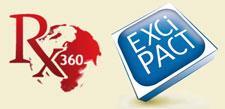
In parallel, the pharmaceutical industry is responding with its own set of initiatives to safeguard the ingredient supply chain. Lynne Byers, head of supplier quality shared service at multinational drugmaker GlaxoSmithKline, told Chemistry World that it is important for drugmakers to understand their own supply chains as ultimately it is the pharmaceutical manufacturer’s responsibility to ensure the safety and quality of all the materials in its products. ’In many of the diethylene glycol cases, for example, it appears the manufacturers failed to carry out standard tests specified in pharmacopoeias, which would have detected the contamination,’ she says. The main tools open to drugmakers are audits of suppliers’ facilities and routine testing of materials coming into the manufacturing plant. The problem with this, however, is the sheer volume of suppliers, which can number in the hundreds or even thousands for any one drugmaker. Byers is chair-elect of the pharmaceutical industry group Rx-360, which was set up in 2009 in the wake of the heparin incident with the stated aim of ’enhancing product quality and authenticity throughout the supply chain’. Central to that initiative is sharing of supplier audits in order to alleviate the burden on both the purchaser and supplier of ingredients. A pilot programme to look at the feasibility of audit sharing is scheduled to get underway shortly in North America, Europe and the Far East, Byers says.
Another new initiative is Excipact, a certification system under development at the International Pharmaceutical Excipients Council (IPEC), which is trying to set up quality and security standards for excipient suppliers that can be certified by a third-party auditing group. This project pays close attention to not just the way a product is manufactured but also the chain of custody, in other words how the products get from the supplier to the manufacturer, explains Iain Moore of Croda Europe, one of the principal architects. ’In my experience as a supplier, very few if any audits ever touch on distribution, which is often the weakest link in the supply chain because the manufacturing sites are generally identifiable and subject to inspection,’ he says.
Critics of these industry-initiated projects suggest that they are powerless in the face of premeditated actions by criminals, but this is missing the point, according to Frank Milek of the European Association of Chemical Distributors (FECC). ’The question is often asked, can guidelines on the manufacturing and distribution of products that are intended to enhance security and quality actually prevent deliberate, criminal actions?’ he says. ’These people forget that if you have regulatory or voluntary requirements in place that encourage visibility and traceability in the supply chain, it becomes much easier to identify those responsible for activities such as falsification or adulteration - that in and of itself is a form of prevention’.
Phil Taylor is a freelance journalist based in Birmingham, UK
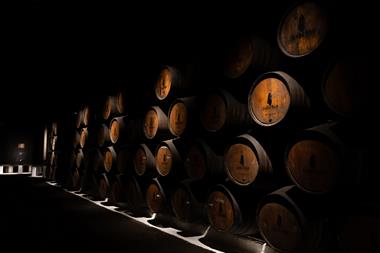
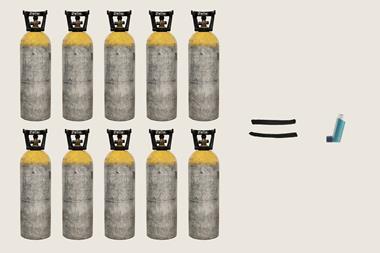




No comments yet